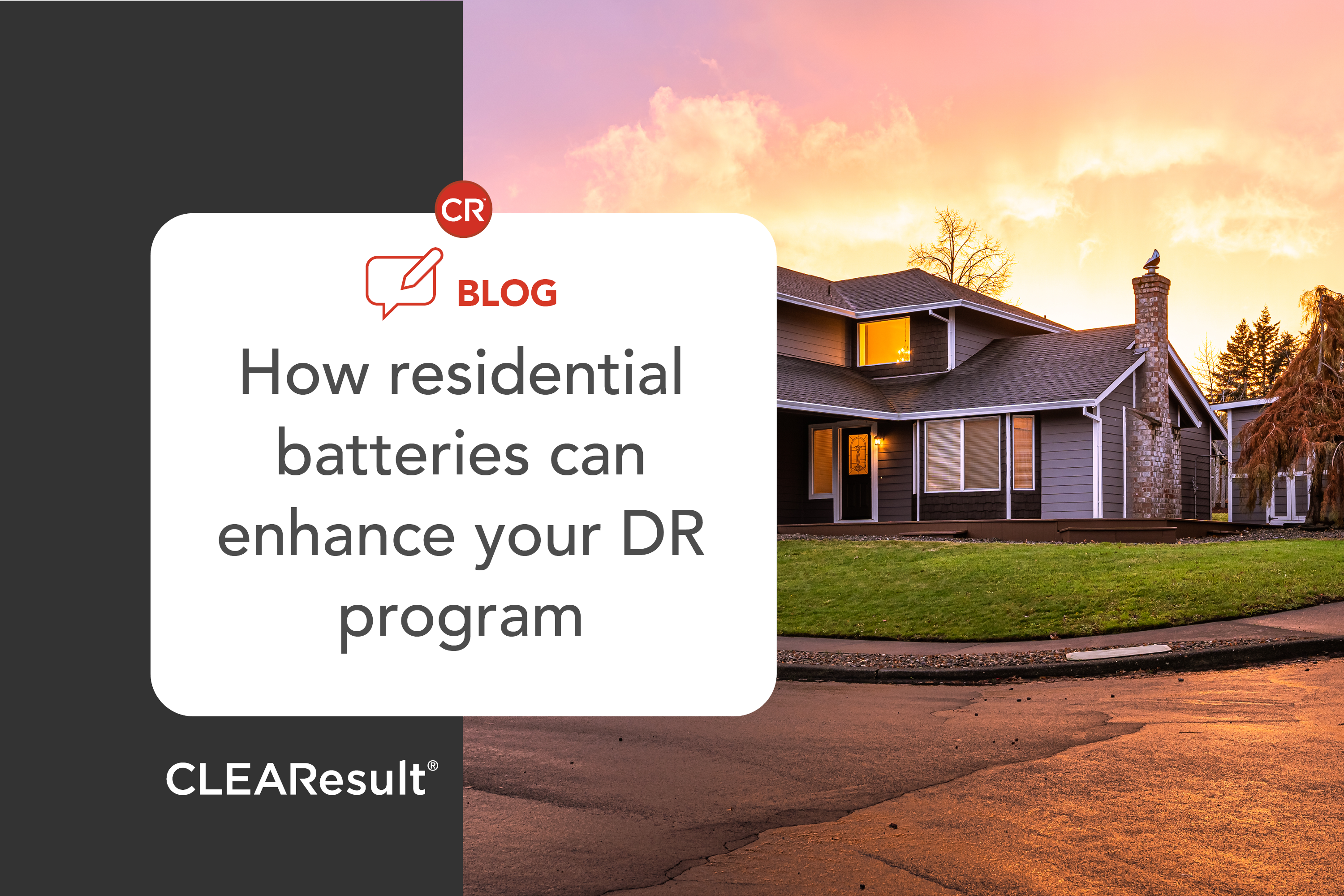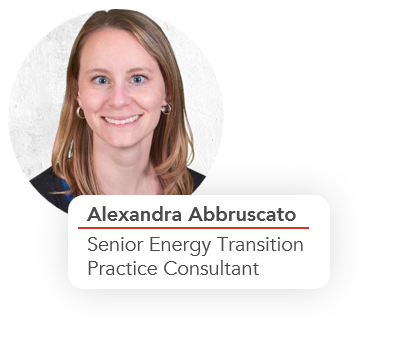How residential batteries can enhance your DR program: Q&A with Alexandra Abbruscato, Senior Energy Transition Practice Consultant

 Residential batteries are a fast-emerging tool for peak load shifting. A residential battery acts like a buffer between a home and the electric grid. It can be used to mitigate local capacity constraints, to optimize daily energy usage and act as a back-up power source during an outage.
Residential batteries are a fast-emerging tool for peak load shifting. A residential battery acts like a buffer between a home and the electric grid. It can be used to mitigate local capacity constraints, to optimize daily energy usage and act as a back-up power source during an outage.
We spoke with Senior CLEAResult Energy Transition Practice Consultant, Alexandra Abbruscato, about what she’s learned from incorporating residential batteries into demand response (DR) programs in the Northeast.
Why should utilities consider integrating residential battery systems into their demand response programs?
Batteries are a reliable and predictable source of capacity. Discharging a battery doesn’t usually have a noticeable impact on customer comfort or convenience – unlike smart thermostats that control heating and cooling, or EV charging that affects a customer's vehicle use. Residential batteries are often installed for backup power or storing solar energy from a rooftop system. Utilities can take steps like setting a minimum state of charge for DR-enrolled batteries to ensure that the program has minimal effects on these other customer value streams, while providing another source of value. Batteries are also available year round and can help utilities target both summer and winter peaks.
What strategies have proven most effective for dispatching residential batteries in DR programs?
Generally, one of two strategies is used for battery DR. One strategy is to dispatch batteries during discrete events on days with especially high demand to target reduction of a seasonal peak. The second strategy is to dispatch batteries at similar times each day, to target a daily peak more consistently. Batteries can also be used to optimize usage based on day-ahead pricing or time-of-use rates. While customers may use this dispatch strategy independently, utility programs can incorporate customer rate structures into program control schedules. For example, this could help to ensure that if a customer battery discharges due to an event, it does not subsequently recharge during a period of higher pricing.
What lessons have you learned from the initial implementations of residential battery DR programs?
Many utilities want to start small with a battery pilot before expanding to a larger program offering, but launching a small program first can present challenges of its own. Battery original equipment manufacturers (OEMs) are more inclined to work with larger programs, as they have the potential to reach more customers. On the other hand, full program scale is difficult to achieve in many markets where the installed base of batteries remains small. Program incentives can accelerate adoption by lowering initial costs. We recommend customers ask their trusted utility provider to connect them with information about other incentives, such as state or federal tax credits, as well as local installers who are experienced with residential batteries. Utilities can also collaborate with battery OEMs and leverage OEM-driven marketing along with program marketing to boost battery uptake in the service territory. All these strategies will serve to increase the pool of eligible devices and enrolled capacity.
What are some key considerations utilities should keep in mind when designing a battery-based DR program?
Utilities should look at the existing base of installed batteries in their service territory and understand which customers own batteries and why. In addition to these customer-focused benefits, batteries can provide other value streams to the grid, like participating in capacity markets or demand response programs, if they exist. It's critical for utilities to understand the full landscape of use cases and potential value streams for batteries in their service territory. Customers who have installed a battery to store on-site solar energy may use their battery differently than customers who installed a battery primarily for back-up power during outages – understanding these differences can support an effective event design.
In some markets, OEMs or installers may offer a default option for capacity market participation, and these options must be evaluated as potentially complementary or competitive to the utility program. Successful DR programs will be able to incentivize customers for the value streams the utility is able to leverage, while dispatching the devices in a way that does not interfere with any non-DR uses of the batteries.
What practical steps can utilities take today to implement or enhance a residential battery DR program?
If you have existing DR programs, particularly behavioral DR, examine whether existing batteries owners could be encouraged to participate with additional marketing and education. Then, look to support the adoption of batteries with communication and control capabilities that will enable DR program participation. Collaborating with local battery installers is a great early step for utilities who want to understand adoption trends and where they can most effectively apply influence. Of course, if the utility runs any other programs that already support batteries, reaching out to those programs early on is also an effective way to ensure that any available program incentives (for DR as well as any existing programs) are stacked for customers to help offset the initial cost of their battery.
While lithium-ion batteries have dominated residential energy storage, sodium-ion technology is making waves in unexpected places. For example, Natron Energy is using sodium-ion batteries to power high-performance data centers, helping them manage massive energy spikes without overloading the grid. If they can handle AI-driven data demands, could sodium-ion be a viable option for homes too?
Alexandra Abbruscato is a Senior Energy Transition Practice Consultant focused on distributed energy resources. She has 12 years of experience in energy efficiency and energy sustainability. Before joining CLEAResult, Alexandra worked for nearly five years with Eversource, managing the energy efficiency program in Massachusetts and managing individual evaluation studies across its portfolio of energy efficiency products. She also held the co-chair on the Massachusetts Evaluation Management Committee. Alexandra holds a B.S. in Biological Engineering from Cornell and an M.B.A. from Boston University.